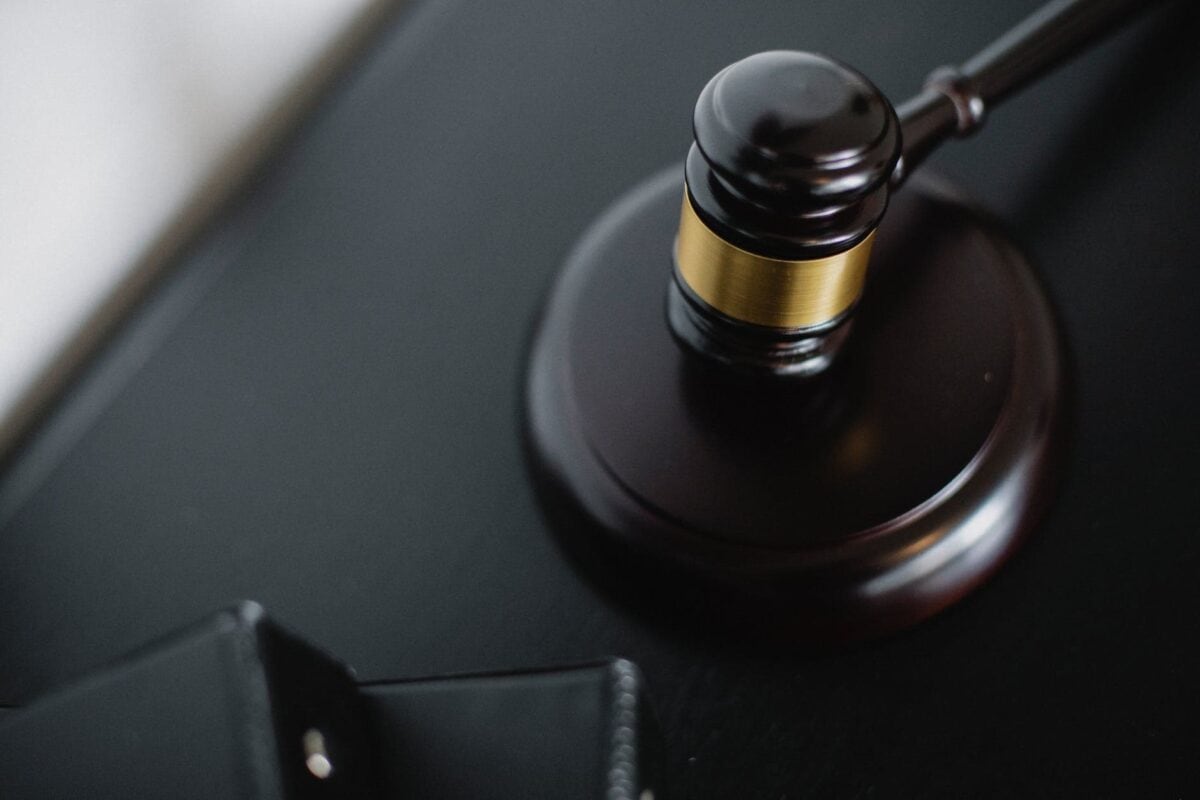April 19, 2024
Strategic Defenses to Appellate Malpractice Claims

Defending appellate malpractice cases requires an understanding of the state and federal laws of the jurisdiction, as well as an understanding of the law in connection with the underlying claims. It also requires knowledge of the standards in connection with appellate malpractice, including areas in which claims are made, the principles involved in the prosecution or defense of the claims, and what damages can be available in actions against appellate counsel.
While certain strategic defenses are available to defend against appellate malpractice claims, each approach must be carefully evaluated. These defenses include collateral estoppel, invited error and the applicable statute of limitations. Depending on the unique circumstances of each case, one or more of these defenses may or may not apply.
In Frank Angrisani v. The Law Offices of Leo B. Dubler, III, LLC, 2024 WL 336549 (App. Div. January 30, 2024), the New Jersey Appellate Division held that the collateral estoppel elements were met because the issue of damages in the underlying litigation and complaint against appellate counsel were identical. The issue was whether the plaintiff could prove he suffered actual damages as a result of legal malpractice. However, in both cases, the plaintiff failed to establish the fair settlement value of his claims and failed to satisfy his burden to demonstrate the actual damages he suffered as a result of the attorney’s alleged malpractice.
As a result, the plaintiff could not demonstrate in the underlying case or in the claims against appellate counsel that there was a likelihood of success in trying the underlying contract case, which settled. While the plaintiff in Angrisani focused on causation, arguing that the proofs on proximate cause were different in the two matters, he could not avoid the fact that the issue of damages in both cases were identical. The Appellate Division noted that while the negligence of the defendants was different in the underlying case and in the appellate legal malpractice case, the issue of proximate cause itself was separate and distinct from the issue of damages. Both proximate cause and damages were thoroughly argued in the underlying matter and in the underlying appeal, and were considered by the trial court and the Appellate Division.
The trial court in the appellate malpractice litigation properly determined that the plaintiff’s claims for damages were barred because the plaintiff relied on the same expert report in both cases, and once that report was found wanting in the underlying case, the trial court in the appellate legal malpractice action properly found that the plaintiff was collaterally estopped from relying on that report to attempt to prove actual damages in the case.
Another doctrine to consider when faced with an appellate malpractice claim is the Doctrine of Invited Error, which operates to bar a litigant from arguing on appeal that an adverse decision is a product of error. This occurred, for example, in Brett v. Great Am. Recreation, 144 N.J. 479, 503 (1996), when a party urged the lower court to adopt a proposition now alleged to be in error. The doctrine “is intended to ‘prevent [a party] from manipulating the system’ and will apply ‘when a [party] in some way has led the court into error’ while pursuing a tactical advantage that does not work as planned.” State v. Williams, 219 N.J. 89, 100 (2014) (quoting State v. A.R., 213 N.J. 542, 561-62 (2013)). A party “cannot beseech and request a trial court to take a certain course of action, . . . then condemn the very procedure he sought and urged, claiming it to be error and prejudicial.” State v. Pontery, 19 N.J. 457, 471 (1955).
Another practical defense to utilize when defending appellate counsel involves the invocation of the statute of limitations. In legal malpractice actions, the statute of limitations in New Jersey will begin to run as soon as the action for which appellate counsel was hired is decided by the Appellate Division. See, N.J.S.A. 2A:14-1. See also, Grunwald v. Bronkesh, 131 N.J. 483 (1993) (the court held that a legal malpractice action accrues when the attorney’s breach of a professional duty proximately causes the plaintiff’s damages “legal malpractice claims are subject to a six-year statute of limitations.” N.J.S.A. 2A:14-1; McGrogan v. Till, 167 N.J. 414, 419 (2001).
With regard to appellate malpractice claims, the statute would begin to run at the time the Appellate Division decision is received because, at that point, the plaintiff would have suffered “actual damages” to the extent that the appellate attorney failed to preserve the rights of the client on appeal. The fact that the plaintiff might not know the full measure of her damages “would not delay accrual of the statute of limitations.” See, Vision Mortg. Corp, Inc. v. Patricia J. Chiapperini, 156 N.J. 580, 586 (1999). A different result would effectively provide a plaintiff with an “indefinite” amount of time to bring suit against appellate counsel. Id. at 585. Therefore, the six-year statute of limitations would begin to run at the time the Appellate Division decision is issued.
It is obvious that the area of appellate malpractice presents “thorny” issues. This also includes whether or not a jury can hear the claims or whether the claims of appellate malpractice should be limited to a court sitting without a jury. The New Jersey Supreme Court has not decided this issue; however, it is raised in every case involving claims for appellate malpractice.
To properly defend attorneys facing appellate malpractice claims, defense counsel must be armed with the proper strategic defenses available. Having a firm understanding of the law of the jurisdiction and a knowledge of the standards in connection with appellate malpractice is vital; as is a strong understanding of the areas in which claims are made; the principles involved in the prosecution or defense of the claims; and what damages can be available in actions against appellate counsel.
Meet the Authors
 John (Jack) Slimm is a member of the Professional Liability Department at Marshall
John (Jack) Slimm is a member of the Professional Liability Department at Marshall
Dennehey in Mount Laurel, NJ. He concentrates his practice in the defense of professional liability matters, with an emphasis on the defense of complex litigation at the trial and appellate levels. Jack is admitted to practice in New Jersey, New York, and before the Third Circuit Court of Appeals and the United States Supreme Court. JLSlimm@mdwcg.com
 Jeremy J. Zacharias, RPLU is a shareholder in Marshall Dennehey’s Mount Laurel office where he represents and defends various licensed professionals facing professional liability claims. He also represents financial institutions in the defense of individual and class action lawsuits. He is admitted to practice in New Jersey, Pennsylvania and the federal court in the District of New Jersey. He is an active member of PLUS and the New Jersey State and Camden County Bar Associations. JJZacharias@mdwcg.com
Jeremy J. Zacharias, RPLU is a shareholder in Marshall Dennehey’s Mount Laurel office where he represents and defends various licensed professionals facing professional liability claims. He also represents financial institutions in the defense of individual and class action lawsuits. He is admitted to practice in New Jersey, Pennsylvania and the federal court in the District of New Jersey. He is an active member of PLUS and the New Jersey State and Camden County Bar Associations. JJZacharias@mdwcg.com
News Type
PLUS Blog
Business Line
Other Business Lines
Topic
Professional Liability (PL) Insurance
Contribute to
PLUS Blog
Contribute your thoughts to the PLUS Membership consisting of 45,000+ Professional Liability Practitioners.
Related Podcasts

The Precipice Episode 4
Introducing “The Precipice,” the podcast series dedicated to illuminating the horizon of…
Related Articles

Q1 Highlights: Top PLUS On-Demand Content
As we close out the first quarter of 2025, we’re looking back…

What’s Missing in Your Coverage? The Overlooked Role of Miscellaneous Professional Liability
Over the last several years, insurance agents and wholesalers have become hyper-focused…

Statute of Limitations Stands: Pennsylvania Court Affirms Dismissal of Breach of Contract Claim Against Insurance Broker
In a decision that is meaningful for both insurance brokers and the…
